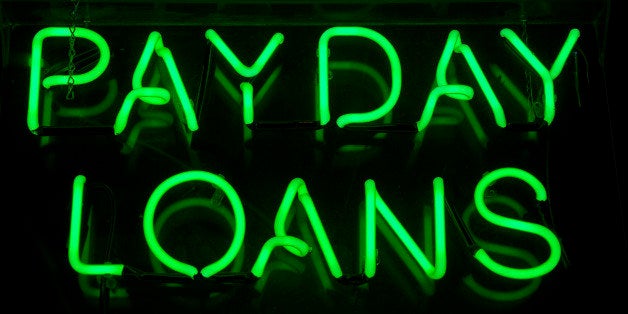
Hardly a day goes by when my email inbox does not contain an offer to lend me $1,000 or so, no questions asked. The internet is a cost-effective way of identifying and soliciting potential clients for payday loans. Potentially, it could also be a way to regulate the worst abuse of payday lending, as I'll explain below.
Payday loans are small loans generally in the $150-$400 range, repayable in a few weeks when the borrower is due to receive a paycheck or some other scheduled payment. The loan is designed to tide the borrower over until the payment is received. The cost of a loan is usually $15 to $20 for each $100 borrowed, regardless of whether repayment is due in one week, two weeks, or 4 weeks.
Payday loans are convenient, quick, and readily available without a credit assessment. To assure repayment, borrowers provide lenders with direct access to their deposit account; in effect, borrowers authorize lenders to repay themselves from the borrower's account.
Payday loans are not unique to the US. When I last visited South Africa, I asked my local guide why, at 11:30 in the evening, a bunch of men were lined up in front of an ATM. He explained that at midnight, funds deposited by a large local employer were credited to the accounts of employees, and those waiting in line were payday lenders holding the ATM cards of those employees who were their borrowers. The lenders were there to repay themselves before the borrowers had an opportunity to withdraw the funds themselves!
The usual rap against payday loans is their high interest rates which, on an annual basis can run 400% or higher. The knee jerk policy reaction is to set maximum rates and fees, which some states have done. North Carolina imposes such restrictions, for example, while South Carolina does not. As a result, there is much more payday lending in South Carolina, and a sizeable chunk of it is to residents of North Carolina.
At the Federal level, payday lending is subject to regulation under a number of laws including the Truth in Lending Act and the Fair Credit Reporting Act, but none of the Federal laws set maximum rates. This is fortunate because high interest rates are not the problem with this market. The main problem is not that payday loans are costly but that they are potentially addictive.
Payday loans can be useful if used occasionally to meet unexpected contingencies. But if the need for the loan arises from a persistent gap between the borrower's income and expenditures, the loan will not eliminate the gap. Indeed, the ease with which the cash is obtained may discourage the borrower from making the changes in spending practices that are needed. The borrower becomes addicted to payday loans.
This evidently is more the rule than the exception. A recent study by the Consumer Financial Protection Bureau (CFPB) showed that among a sample of payday borrowers, only 13% had 1 or 2 transactions during the 12-month period covered by the study. 39% of the borrowers had 3 to 10 transactions, and 48% had 11 or more transactions. The median number of transactions during the year was 10.
The frequent borrowers account for a disproportionate share of loan fees paid to lenders. The 48% of borrowers who had 11 or more transactions produced 75% of the fees. The frequent borrowers accounted for an even larger part of lender profits because the marketing expenses of payday lenders is focused on getting new clients.
There is no one connected to the payday loan market with an interest in helping the borrower deal with an occasional fund shortfall while preventing him from becoming a payday loan junkie. Payday lenders certainly can't play that role because they make most of their money from payday junkies. The CFPB is on the borrower's side but the focus of the various statutes it enforces is protecting borrowers against abuses by lenders and others. There is nothing in these statutes about helping borrowers avoid abusing themselves.
What is needed is a set of rules designed to deter and discourage the frequent - as opposed to the occasional - use of payday loans. As an illustration, an addicted borrower could be defined as one who is indebted more than 30 days out of 90. The corresponding implementation rule would be that no loan can be approved if the period of indebtedness of the requested loan plus prior periods of indebtedness during the 90 days ending with the payoff date of the requested loan, exceeds 30 days.
For this to work, payday lenders would be required to create an electronic file for any loan applicant, unless the applicant already had a file from a previous loan, in which case the lender would merely update the file. The electronic file is the key. Whatever restrictive rule or rules are adopted, they must be deployed on a national basis, which means that the CFPB would be the logical implementing agency.
Of course, payday borrowers remain vulnerable to all manner of abuses by payday lenders. I am not suggesting that regulations designed to prevent such abuses be scrapped. My point is that the worst abuses of payday borrowers are self-inflicted, and it is time that the regulatory system recognized this.
Visit my website The Mortgage Professor for more information on protecting borrowers in the lending marketplace.
